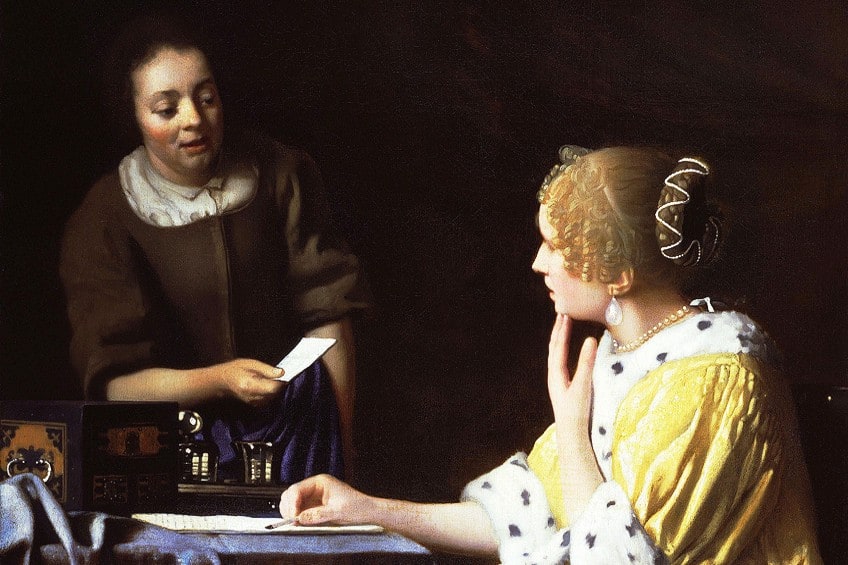Vermeer Exhibition in Amsterdam – Largest Vermeer Exhibit Ever
The Vermeer exhibition in Amsterdam’s Rijksmuseum in 2023 was the largest exhibition ever held of the artist’s work. But what is so significant about the artist’s work, and why was this such a significant event? Let us answer these questions about the Vermeer exhibition in Amsterdam in the article below.
The Importance of the Vermeer Exhibition in Amsterdam
For the first half of 2023, Amsterdam’s Rijksmuseum hosted the greatest retrospective exhibition of Vermeer’s artworks ever, with 28 of his known 35 works on show. The Vermeer exhibition, organized in collaboration with the Mauritshuis, was on display from the 10th of February to the 4th of June 2023. This was the largest Vermeer show ever, including loans from all across the world. Simultaneously, the Museum Prinsenhof Delft hosted the exhibition Vermeer’s Delft.
This was the first exhibition to delve deeply into the cultural-historical background in which Vermeer’s work blossomed.
Contemporary Delft art was displayed with Delft carpets, Delft pottery, archive papers, and personal letters. Delft was where Johannes Vermeer lived and worked. His art is well renowned for his serene, introspective interior scenes, as well as his innovative use of brilliant, colorful light and believable illusionism. In comparison to Rembrandt, Vermeer left a surprisingly limited output of only 35 works. Despite the fact that Delft has a prominent Vermeer Centrum, none of his works of art are owned or shown in his hometown.

All 450,000 admittance tickets had been sold out by the exhibition’s second day in February, making tickets approximately as valuable as a flower bulb during the height of tulip fever. Tourists flew in from all over the world to witness it, hoping to obtain what is undoubtedly the most wanted item of spring 2023: the yellow admission wristband that visitors to the exhibition received upon entry.
What is it about the artist Johannes Vermeer, one of the quietest voices in the canon of Old Master painters, that makes him such a global phenomenon? During his own lifetime, he was an appreciated but not famous individual: he is thought to have primarily worked with the same client in his hometown up until his sudden passing aged 43.
News of his incredible technical prowess and artistic sensitivity did not travel a great deal more than the outermost circle of Delft’s canals as well as those of Hague, a city situated nearby. Following that, he was lost for generations before being rediscovered in the late 19th century by a couple of art historians from France.
The Vermeer Exhibition in Amsterdam Experience
The curators of the show arranged the exhibition in such a way that we could, or at least attempted to, answer that issue for ourselves. There were no frills: the rooms were painted in lush, deep jewel tones and draped with velvet drapes reminiscent of Vermeer’s household scenes. The paintings’ simple semi-circular balustrades dispersed the crowds around them equally, providing everyone a fair look. Wall writings were purposefully placed in different sections of the room, requiring you to focus on the artwork without being distracted by the search for contextual information.
The areas were designed with the same elegance and deceiving simplicity as the rooms and doors featured in his paintings. Unsurprisingly, the attention to detail was the first thing that guests noticed. The “View of Delft” seems ordinary at first sight in the first room.
The creative methods in which Vermeer realized this intricate study of shadow and light came into focus as the people standing around it dispersed, and one was able to get within touching distance of the piece. The intelligent wall texts give new insights into Vermeer’s alchemical skill with light, and you don’t need to be an art critic to enjoy them.

A particular aspect that runs throughout the show is the artist’s Catholic religion, which he is said to have converted to in 1653, following his marriage to Catharina Bolnes. The second room displayed various examples of his attempts with more realistic religious images, in which he seems to be experimenting with different styles. There is an extraordinarily violent vision of Saint Praxedis moving away from a decapitated victim to squeeze her bloodied cloth into an urn, and his sole known Biblical piece, a scene of Jesus with Martha and Mary, which has a more typical, grounded simplicity.
The exhibition then proceeded to show Vermeer’s best pieces: modestly sized scenes of inscrutable, sphinx-like ladies at leisure and work in the solitude of their houses, with the hazy glow of northern light pouring through a window, invariably from the left.
But seeing a lot of them in such a short period of time – and in the setting of some of the artist’s lesser-known oddities – is like experiencing them for the very first time.
Vermeer’s Appeal
One reason for the artist’s appeal among the avant-garde of the 20th century is that his work was mostly secular: after all, the milkmaids, lacemakers, and lute players in his works of art aren’t all that dissimilar to Manet’s frustrated barmaid or Degas’s solitary woman drinking absinthe. But here, his beautiful light indicates something quite else, resting on the wrinkled sleeve of an ultramarine blue gown or lighting the glassy pearl dangling from the ear of a rich woman.
Despite being drenched in the artist’s delicate, watery light, Vermeer’s paintings – and the ladies in them – never appear cold or distant.
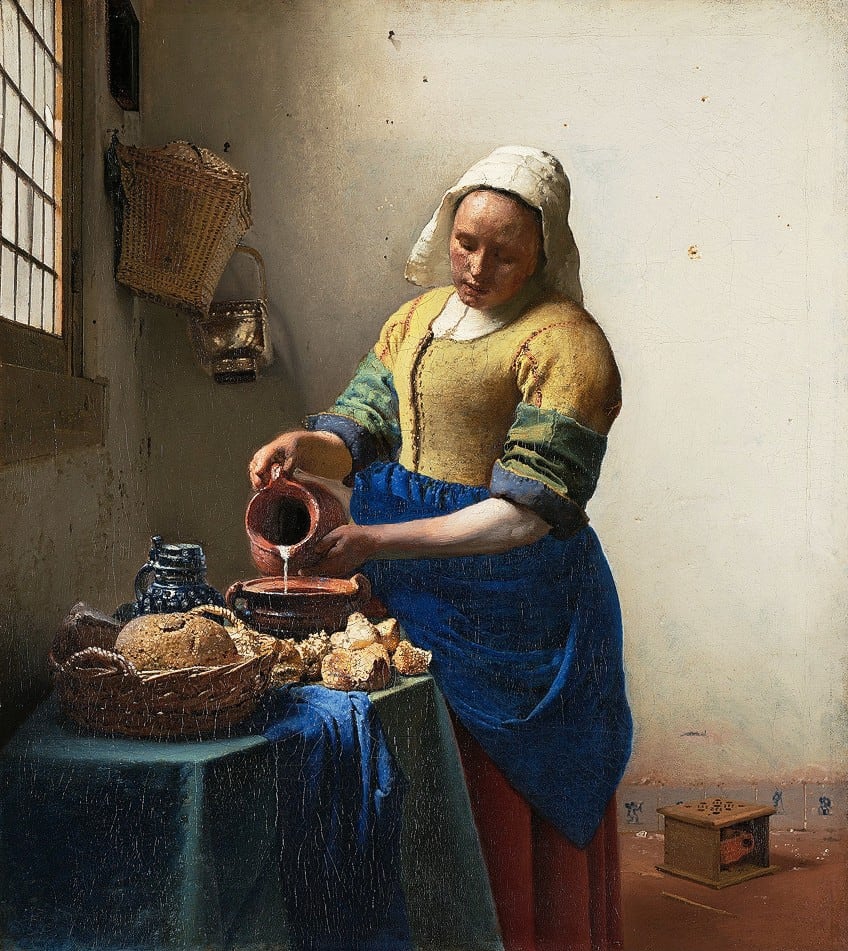
Seeing them all together just emphasizes the raging romance that promises to burst the levee in practically every moment, no matter how contained they look at first. However, the show does not attempt to decipher the enigmas of Vermeer’s paintings definitively, since who could? And, perhaps more importantly, who would? Vermeer’s exceptional ability to create moments of slowness and silence in our image-saturated world is part of his charm, and it may explain why he elicited such a euphoric response from today’s audience. That his works of art provide a space for us to return to a level of focus and thought that is nearly hard to achieve in the Internet era.
Some Background About the Artist
Vermeer is often regarded as one of the most beloved Dutch artists, yet he was hardly recognized in his own day and stayed largely undiscovered until the end of the 19th century. The major reason for this is that he made a limited number of paintings, probably 45 (of which 35 have been identified today), mostly for a small group of Delft clientele. In fact, Pieter van Ruijven, a local collector in Delft, acquired up to half of Vermeer’s output.
Although Vermeer’s works had been recognized by other art collectors in Delft and the neighboring court city of The Hague, and a handful of his works of art were sold to people in other countries, most Dutch artists produced hundreds of images for a far larger market.
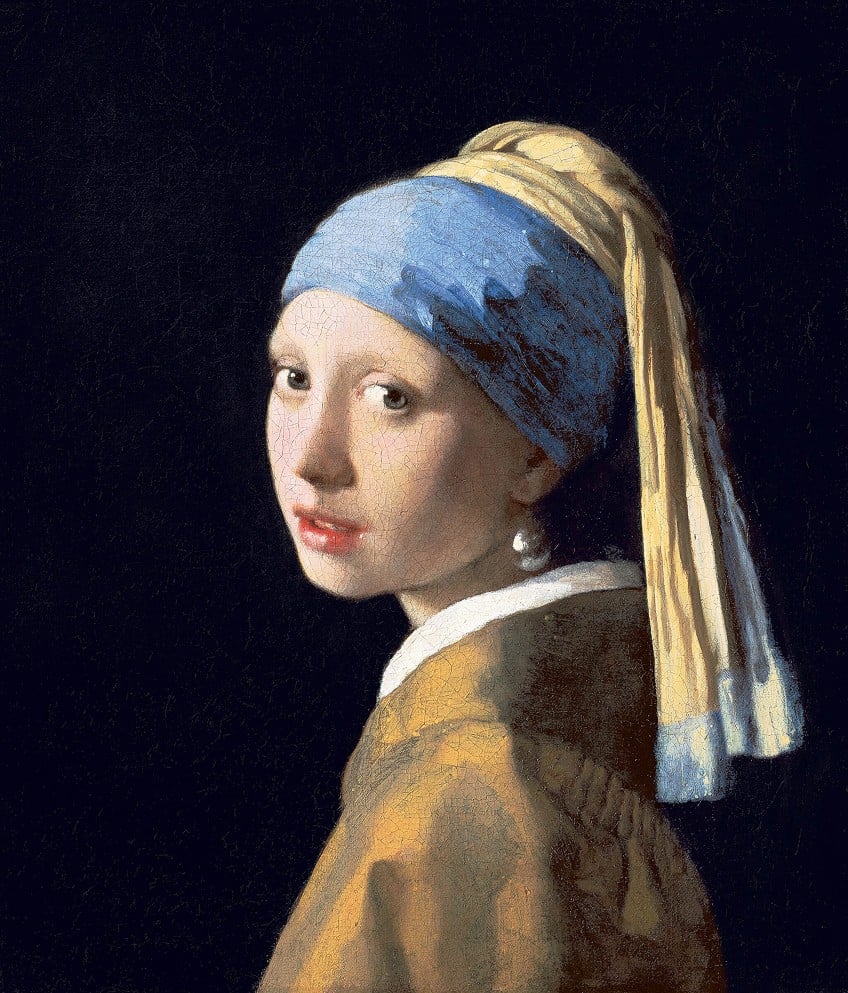
The fact that the artist’s teacher is unknown and that he clearly had no pupils contributes to his reputation as a solitary individual. However, Vermeer was an acknowledged member of Delft’s painters’ guild, and he shared artistic ideas with other artists in the city and surrounding. His father trained to be a fine material weaver but ended up being an art dealer and innkeeper by around 1630. His role as an art dealer may have benefited Vermeer in developing his amazing capacity to absorb the formal conventions from previous and contemporary artists.
Vermeer, on the other hand, trained himself instead of studying with a renowned teacher due to his father’s death and accumulated debts in 1652. A year later, he married a wealthy Catholic divorcee’s daughter; the artist converted to Catholicism and moved into their Delft home.
Style and Characteristics
His artwork commanded high prices during most of his brief career – he passed away at the age of 43, leaving his wife and 11 children – and he was able to maintain his large family, but the poor economy made his last few years hard. Vermeer explored the styles of several 17th-century artists in his early works. Vermeer’s mature interest in realistic effects, precisely balanced compositions, and domestic topics are influenced by a variety of sources in Delft and the surrounding area. The art world was continually tested against direct observation while the artist worked on a painting.
Vermeer was obsessed with light behavior and other optical phenomena including unexpected recessions and shifts in focus.
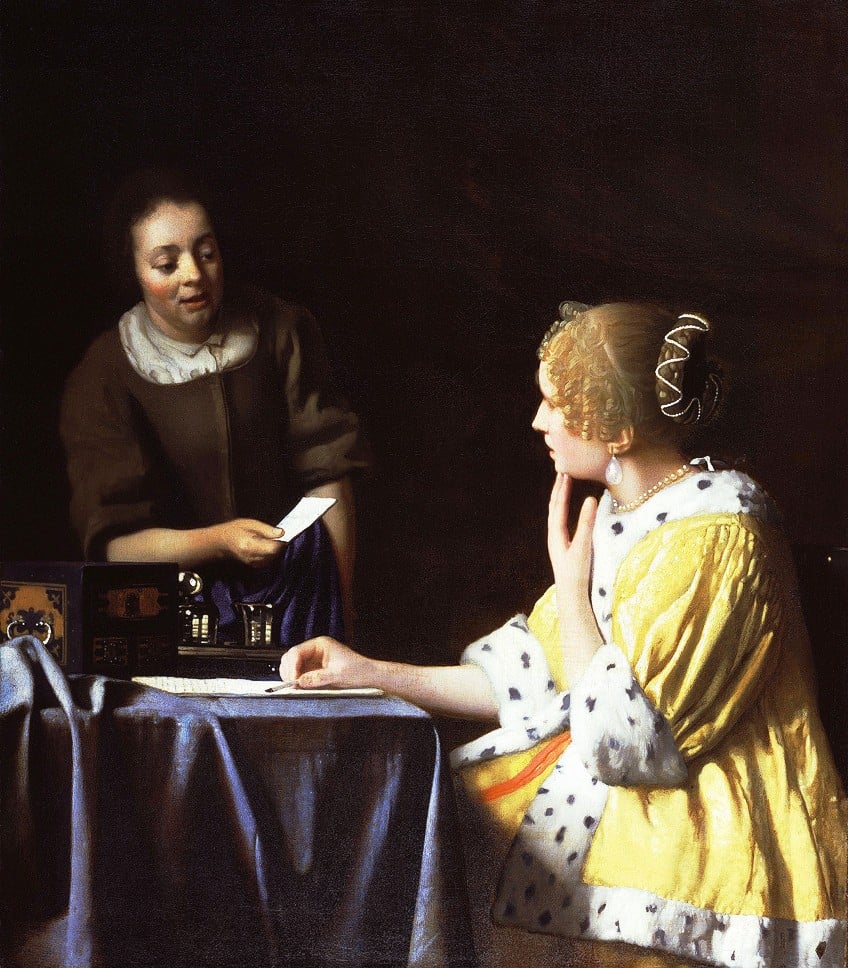
These characteristics may have been influenced by the artist’s fascination with the camera obscura, although their significance to the artist has been considerably overstated. His compositions are largely original and feature the most discerning formal connections, including color interactions. Furthermore, Vermeer’s paint application demonstrates great technical aptitude and time-consuming focus. These attributes complement the subject matter really well in his finest works. Vermeer idealized a home environment dominated by women, whose postures, behavior, and, in certain instances, emotions imply careful observation and sympathy.
He regularly suggests a relationship between a figure and the spectator, quietly presenting the latter as a mesmerized voyeur.
The Rijksmuseum
The Vermeer exhibition in Amsterdam was held at the Rijksmuseum. The Rijksmuseum’s collection was established over 200 years and unlike many other national museums, was not derived from a royal collection combined into a national museum. Its beginnings were rather humble, with its collection of artworks fitting into The Hague’s Huis ten Bosch mansion’s five rooms.
Despite the fact that the 17th century was being recognized as a pivotal time in Dutch art, the museum did not then have works by Rembrandt, Frans Hals, Jan Steen, Jacob van Ruisdael, or Johannes Vermeer. The collection grew over time through purchases and donations.
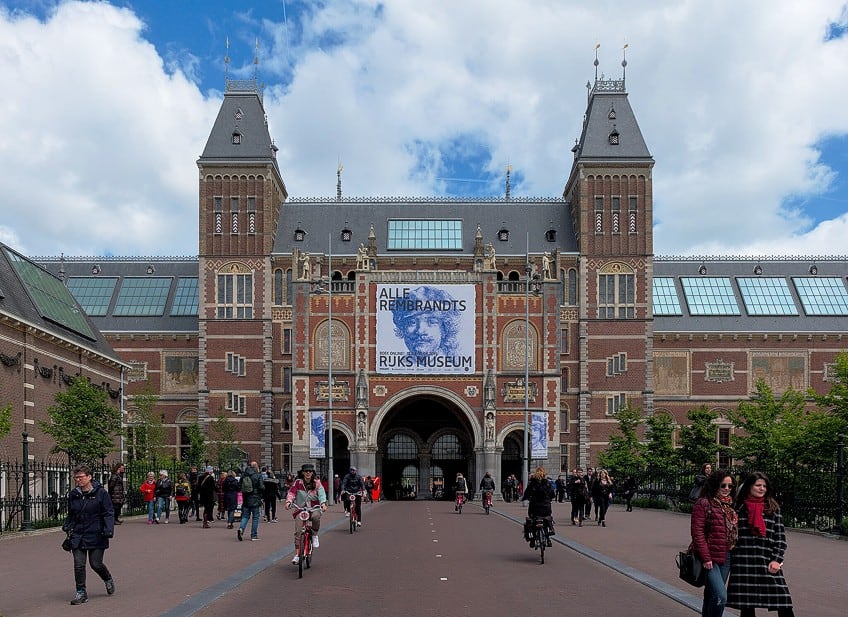
Napoleon took the Stadholder’s collection to Paris; the works of art were taken back to the Netherlands in 1815, but they ended up at The Hague’s Mauritshuis instead of the Rijksmuseum. With the establishment of the Rijksmuseum in 1885, assets from various institutions were combined to form the Rijksmuseum’s primary collection. The Batavian Republic was established in 1795, and its Minister of Finance Isaac Gogel contended that a national museum, modeled after the Louvre Museum in Paris, would be beneficial to the national interest. The government agreed to establish the museum on the 19th of November, 1798. The building was designed by Pierre Cuypers and first opened its doors in 1885.
That concludes our look at Vermeer’s exhibition in Amsterdam. Rated as the biggest exhibition of the artist’s work to date, this popular exhibition at the Rijksmuseum has broken records for its size. This just goes to prove that while the artist remained relatively unknown during his lifetime, he has since become one of the most recognized figures in the world of painting. Museums from across the world collaborated to put together this exceptional show, and their Vermeer works were loaned to the Rijksmuseum. Paintings ranged from moral or scientific messages, to historical portrayals, cityscapes, portraits of ladies, and allegories.
Frequently Asked Questions
When Was the Vermeer Exhibition in Amsterdam Held?
At this popular exhibition at the Rijksmuseum, Vermeer’s work was on display from the 10th of February to the 4th of June 2023. It featured 28 of his works which had been contributed by various museums for the duration of the exhibition. This was regarded as a considerable achievement in the art world since there are only around 35 paintings that are known to have been produced by the artist. The Vermeer exhibition in Amsterdam was regarded as a huge success in every aspect.
Who Was Johannes Vermeer?
Johannes Vermeer was a renowned Dutch artist who was well-known during the Dutch Golden Age. He was primarily known for his gorgeous and painstakingly detailed works of household scenarios, landscapes, and portraits. Vermeer’s paintings are distinguished by their excellent use of light, color, and perspective. Despite his fame now, Vermeer was not well-known during his lifetime, and he suffered financially throughout his professional life. He created an extremely limited number of artworks, with roughly 35 paintings credited to him. Vermeer’s artistic legacy continues to motivate and fascinate art enthusiasts and critics alike, and his significant contributions to the visual arts have had a long-lasting influence. His works of art are displayed in prominent museums worldwide, bringing tourists from all over the world, such as the 2023 Vermeer exhibition in Amsterdam.
Nicolene Burger is a South African multi-media artist, working primarily in oil paint and performance art. She received her BA (Visual Arts) from Stellenbosch University in 2017. In 2018, Burger showed in Masan, South Korea as part of the Rhizome Artist Residency. She was selected to take part in the 2019 ICA Live Art Workshop, receiving training from art experts all around the world. In 2019 Burger opened her first solo exhibition of paintings titled, Painted Mantras, at GUS Gallery and facilitated a group collaboration project titled, Take Flight, selected to be part of Infecting the City Live Art Festival. At the moment, Nicolene is completing a practice-based master’s degree in Theatre and Performance at the University of Cape Town.
In 2020, Nicolene created a series of ZOOM performances with Lumkile Mzayiya called, Evoked?. These performances led her to create exclusive performances from her home in 2021 to accommodate the mid-pandemic audience. She also started focusing more on the sustainability of creative practices in the last 3 years and now offers creative coaching sessions to artists of all kinds. By sharing what she has learned from a 10-year practice, Burger hopes to relay more directly the sense of vulnerability with which she makes art and the core belief to her practice: Art is an immensely important and powerful bridge of communication that can offer understanding, healing and connection.
Nicolene writes our blog posts on art history with an emphasis on renowned artists and contemporary art. She also writes in the field of art industry. Her extensive artistic background and her studies in Fine and Studio Arts contribute to her expertise in the field.
Learn more about Nicolene Burger and the Art in Context Team.
Cite this Article
Nicolene, Burger, “Vermeer Exhibition in Amsterdam – Largest Vermeer Exhibit Ever.” Art in Context. August 3, 2023. URL: https://artincontext.org/vermeer-exhibition-in-amsterdam/
Burger, N. (2023, 3 August). Vermeer Exhibition in Amsterdam – Largest Vermeer Exhibit Ever. Art in Context. https://artincontext.org/vermeer-exhibition-in-amsterdam/
Burger, Nicolene. “Vermeer Exhibition in Amsterdam – Largest Vermeer Exhibit Ever.” Art in Context, August 3, 2023. https://artincontext.org/vermeer-exhibition-in-amsterdam/.


